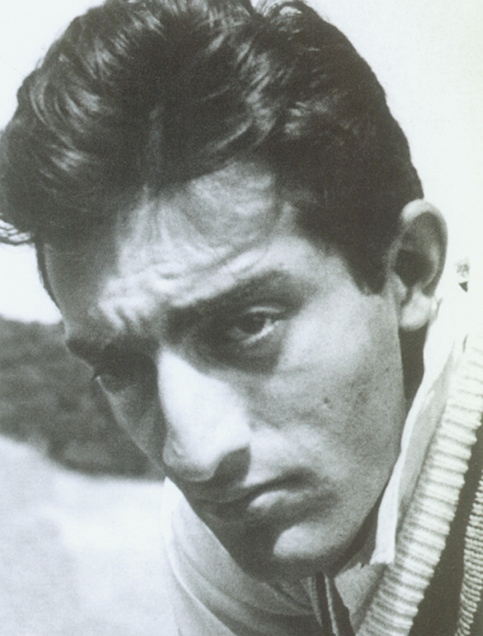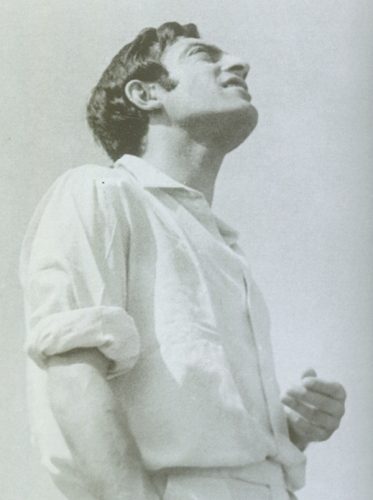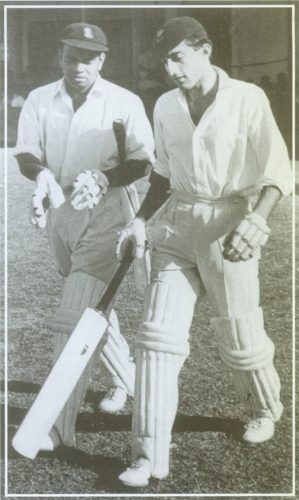Part II
Winchester – Sussex – Oxford
In his final season at Winches-ter, The Noob erased the former England Captain (in the infamous Bodyline series) Douglas Jardine’s forty year old batting records, which had previously been considered untouchable, of 997 runs in a season at an average of 66.46, by compiling 1068 runs at 71.20 per innings. In four seasons of playing for the Lords, he accumulated 2,956 runs at an average of 56.85.
The Noob’s sporting talents were not confined to cricket only, as he also represented the Wyke-hamists in football at wing-half, and partnered with Christopher Snell to capture the English Public Schools Rackets championship. Rackets, a discipline at that time (and still virtually) confined to the domain of the English Public Schools – which are, in fact, very expensive private schools ‒ is not unlike the game it spawned, squash. The major difference is that rackets is played with a very hard ball and one requires a fleetness of foot and an ability for instant computation of angles, as the ball careens off the four stone walls and rock floor, at alarming speeds that can reach 180 mph.
It was not long before the schoolboy prodigy was playing at the next level. Robin Marlar, later cricket correspondent of the Sunday Times and the 169th president of the Marylebone Cricket Club (MCC) remembers the transition in these words; “Hubert Doggart, himself the son of a great games player, persuaded me, his successor as skipper of Sussex, to take the team to play Winchester, where he had learned the game and was now cricket master. [The coach was George Cox also a Sussex player at the time]. My reward was to be hit, I think, for five majestic sixes, several of which would have splintered the sight screen, had it not been canvas. My team sniggered. I was less than half amused but then and there resolved that this Pataudi would play for Sussex and not for his father’s county, Worcestershire.”
Sussex won the token tug-o-war and while his classmates went home for the next summer, the sixteen year old student was making his first class debut, quite appropriately at New Road, the home of Worcestershire. No doubt, his late father would have been proud that his ‘Tiger’, for whom, as a five year old, he had taken back to Pataudi a specially made bat, was following in his path. It is noteworthy that Marlar highlights the Nawab’s tendency to eschew the then staid methods of Indian batting which centred on a conservative technique, defending one’s wicket first and scoring with a series of nudges, pushes and deflections. The Nawab favoured an aggressive approach and relished hitting over the top. After being dismissed for a duck on debut, the young prince adjusted to the county game and soon became a regular member of the county side.
The Nawab’s departure from the 577 year old institution after the 1959 season was met with some appreciation by at least one younger member of the school who had gained access to the billiard table, since it was no longer occupied by The Noob, who had developed the peculiar habit of sleeping on it.
Upon completion of his schooling at Winchester, following his father’s path, the young prince went up to Oxford University. Initially tutored at home in English and Urdu, and no doubt having been served a healthy dose of Latin at public school, he was purportedly at Balliol to read Arabic and French. By his own later admission, “In 1959, I enrolled at Oxford, and continued to play county cricket – with rather more distinction than I brought to bear with my academic pursuits.”
In his debut varsity match against Cambridge, the Ninth Nawab emulated the Eighth, by scoring a century, 131, which included 18 boundaries and one six. The elder’s record of 238 for the annual varsity encounter at Lords set in 1931, which eclipsed the previous record of 201, set the day before, stood for many a year. Abbas Ali Baig, his fellow Indian, recalls the Nawab equalling “my record for the highest number of runs scored in a season at the Parks [Oxford’s idyllic cricket ground]…”
In his second year at Oxford, The Noob, (the nickname had tagged along with him), having gained his blue as a freshman, was voted as captain of the university over several senior players, the first Indian to lead either Oxford or Cambridge. Having made his first class debut in India, representing Delhi in the Ranji Trophy the previous winter, the Nawab was now on the international cricket radar and had developed a large following at home.
Here’s an excerpt of a new agency report published in the 5th May, 1961 edition of The Hindu: “The Nawab of Pataudi, the 20-year-old Oxford University captain, hit his second century in two days when he scored an undefeated 103 off county champions Yorkshire at Oxford today. Yesterday, he took 106 off an attack that includes England Test star [Fred] Trueman. Today, he was even better. He hit eighteen 4s in an innings that lasted two hours 16 minutes. Pataudi, whose father played for both England and India, is only the 10th batsman to hit two centuries in a match against Yorkshire.” The champion’s bowling attack also included England regulars Don Wilson, Ray Illingworth and Brian Close.
As summer arrived the Ninth Nawab father’s varsity record of 1,307 runs in a season, set in 1931, was within his sights. With three matches remaining on Oxford’s schedule, The Noob had made 1,216 runs and led the English first class batting averages table with 55.27 per innings.
1st July, 1961, Hove, Sussex
After a hard day of cricket versus Sussex, the Oxford team was making its way back to the hotel in Hove. Three members of the side decided to get out of the car and walk the last three hundred yards to the hotel. The Noob declined and moved to the front passenger seat of the Morris 1000 car next to the driver, wicketkeeper Robin Waters.
“I had just settled down, when a big car suddenly pulled out into the middle of the road and into our path. We hit it straight on, “the Nawab recalled some years later. The accident would have a catastrophic effect on his life; little did he know.
Waters suffered a few cuts above the forehead, whilst his captain was diagnosed with a broken right shoulder and a gashed left wrist. Soon, The Noob realized he was having difficulty seeing out of the right eye. Further examination revealed that a splinter from the shattered windscreen was stuck in his eye. Initially, there was a discussion about removing the eye since the damage was so severe. The surgeon who performed the surgery advised him to “play cricket using one eye” rather than try and master a contact lens. His season done and given a year off from Oxford, the Nawab returned to Pataudi.
India
A lesser mortal might have succumbed to the limitations of such a severe setback on a life full of promise. Not the Afghan descendant. Rather than moping on his misfortune, four weeks later Tiger was back at nets, trying to adapt to playing with one good eye and a contact lens in the other. He discovered that the contact lens gave him ‘about 90 per cent vision’ but made him “see two of everything.” Never once doubting that he couldn’t play again, he realized that any hope of being a great batsman was no longer possible, he concentrated on becoming a useful batsman and a better fielder than his father. He modified his stance to become “more two eyed” and worked harder on improving his already high standard of fielding, which he could no longer do close to the bat, as was his wont.
Four months away from England and two operations later, the MCC arrived in India. The Nawab leapt at the invitation to play against them at Hyderabad. He managed to get to 30, but the double vision of the contact lens gave images of two bowlers and two balls, and he opted to play at the inner of the two latter images. At the tea interval, he discarded the contact lens. By pulling his cap down over his right eye, “With only the left eye’s sight, I managed to reach 70,” is his humble recollection of beating the odds of playing first class again.
On 13th December, 1961, less than six months after a tragic accident and with only eye, the Ninth Nawab of Pataudi, made in his Test debut in the Third Test at Delhi versus England, then led by his county captain Ted Dexter. Batting fourth in the order, Pataudi contributed only 13 in the rain affected match. In the following Test at Kolkata at the turn of the year, he had scores of 64 and 32, as India won by 187 runs to take a 1-0 lead in the series.
On 10th January, 1962, the opening day of the Fifth Test at Chennai, Pataudi made his maiden Test century, 103 in 162 minutes, an innings that included sixteen 4s and two 6s. India won by 128 runs to win their first ever series against England.
Questioned about when he thought he could play Test cricket, the Nawab nonchalantly replied, “When I saw the English bowling.”
In the final part next week, The Nawab takes the helm.




